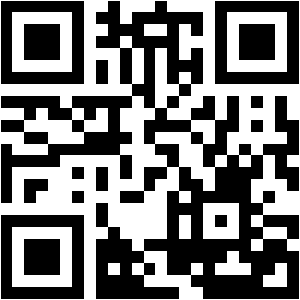- NURS1067 Foundation Of Nursing Theory Assignment Sample Canada
- PATH1017 Pathology & Therapeutics II Assignment Sample Canada
- GSSC1183 Food And The City: An Investigation Of Food System Assignment Sample Canada
- DENT1123 Dental Software II Assignment Sample Canada
- DENT1122 Dental Office Theory II Assignment Sample Canada
- DENT1121 The Dynamic Dental Practice Assignment Sample Canada
- DENT1120 Transition To Work Assignment Sample Canada
- DENT1125 Field Education Assignment Sample Canada
- DENT1111 Dental Software I Assignment Sample Canada
- CLIN1002 The Clinical Environment II Assignment Sample Canada
- DENT1109 Dental Office Theory I Assignment Sample
- CLIN1001 The Clinical Environment I Assignment Sample
- ANAT1059 Anatomy & Terminology II Assignment Answer Canada
- ANAT1032 Anatomy & Terminology I Assignment Answer
- NURS2020 Practical Nursing Clinical Applications IV Assignment Answer Canada
- NURS2023 Health Assessment In Clinical Practice II Assignment Answer Canada
- NURS1028 Nursing Theory For Practical Nurses II Assignment Answer Canada
- NURS1027 Nursing Theory For Practical Nurses I Assignment Sample
- NURS1100 Foundations In Clinical Practice Assignment Sample Canada
- NURS1068 Health Assessment In Clinical Practice 1 Assignment Help
ANAT1053 Anatomy & Physiology For Practical Nursing II Assignment Answer Canada
ANAT1053 Anatomy & Physiology For Practical Nursing II is a college-level course that builds on the knowledge learned in the first semester of study. ANAT1053 Assignment Sample 2 covers the anatomy and physiology of the human body systems, with an emphasis on how these systems work together to maintain health. In addition, students learn about common medical conditions and diseases, and how they can be treated. ANAT1053 Assessment Answer 2 also covers issues related to medications and their side effects. By the end of the course, students should have a well-rounded understanding of human anatomy and physiology, and be able to apply this knowledge to real-world clinical situations.
Get the Best Assignment Answer for ANAT1053 Anatomy & Physiology For Practical Nursing II
ANAT1053 Anatomy & Physiology For Practical Nursing II is one of the most difficult subjects you will face in nursing school. But don’t worry, we’re here to help! Our team of expert writers have years of experience helping nursing students ace their assignments, and we can do the same for you. We’ll provide you with a custom-written answer for the ANAT1053 Assignment Sample 2 all the key points of the question, so you can be confident you’re getting the best possible grade. Don’t spend hours struggling with your assignment – let us take care of it for you!
Buy Non Plagiarized & Properly Structured Assignment Solution
Assignment Activity 1: Understand and utilize the basic language of human anatomy and physiology to apply standard anatomical terms and concepts for identification, communication with clients and the interprofessional health care team, critical reading of relevant evidence-informed health care literature, and participation in nursing client care
To be a successful nurse, it is essential to have a strong foundation in human anatomy and physiology. This knowledge helps nurses to better understand the human body and how it works. It also allows nurses to communicate more effectively with clients and other members of the interprofessional health care team. Furthermore, having a good understanding of anatomy and physiology can help nurses to critically read relevant evidence-informed health care literature. Finally, this knowledge is essential for participating in nursing client care. By understanding and utilizing the basic language of human anatomy and physiology, nurses can provide better care for their clients and play a more active role in the interprofessional health care team.
Assignment Activity 2.1: Identify the normal structure and physiological functioning of the Nervous, Endocrine, Respiratory, Cardiovascular, Urinary, Digestive, Muscular, Reproductive, and Immune Systems
The human body is a complex system of interdependent parts. Each system plays an important role in keeping the body functioning properly. The nervous system is responsible for transmitting signals between the brain and the rest of the body. The endocrine system regulates hormone levels, which in turn affects many different functions, including growth, metabolism, and reproduction. The respiratory system helps to bring oxygen into the body and remove carbon dioxide. The cardiovascular system circulated blood throughout the body, delivering oxygen and nutrients to cells and removing waste products. The urinary system filtered toxins from the blood and eliminated them from the body in urine. The digestive system broke down food so that it could be absorbed by the body. The muscular system allowed the body to move. The reproductive system allowed humans to reproduce. The immune system protected the body from infection.
Assignment Activity 3.1: Identify Normal and Pathological Physiological concepts to guide practice in Nursing Theory, Simulation Laboratory courses, and Clinical Practice
In nursing theory, simulation laboratory courses, and clinical practice, it is important to be able to identify normal and pathological physiological concepts. This knowledge can help guide your decisions and actions in providing care to patients. For example, knowing the difference between normal and abnormal heart rates can help you determine if a patient is experiencing a heart attack or other cardiac event. Similarly, understanding the different stages of labor can help you provide the appropriate care during delivery. This knowledge can also be helpful in understanding how certain medications work and their side effects. Ultimately, being able to identify normal and pathological physiological concepts can help you provide better care to patients and improve outcomes.
Pay & Get Instant Solution of this Assignment of Essay by Canadian Writers
Assignment Activity 4.1: Describe the relationship of the Body’s Systems (at the Cellular, Tissue, and Organ Levels) in the maintenance of Homeostasis, including Fluid and Electrolytes and Acid-Base Balance
The human body is an incredible machine, made up of billions of cells that work tirelessly to keep us alive and healthy. All of the body’s systems are interdependent, and they must all work together to maintain homeostasis or a state of balance. For example, the circulatory system transports oxygen and nutrients to cells and removes wastes, while the respiratory system brings oxygen into the body and eliminates carbon dioxide. The digestive system breaks down food and absorbs nutrients, while the excretory system eliminates wastes from the body. And all of these systems rely on fluid and electrolyte balance to function properly. Electrolytes are minerals that dissolve in water and help to regulate things like muscle contraction and fluid balance in the body. When there is an imbalance of electrolytes, it can lead to serious health problems. Acid-base balance is another important aspect of homeostasis. The body must maintain a pH level of 7.35-7.45 in order to function properly. An imbalance in acid-base levels can also lead to serious health problems.
Please Write Fresh Non Plagiarized Assignment on this Topic
Assignment Activity 5.1: Understand the processes of Digestion, Absorption, Metabolism, and the excretion of ingested nutrients and apply to understand as it relates to client-centered care
After food is ingested, it enters the digestive system where it is broken down into smaller nutrient molecules that can be absorbed into the bloodstream. From there, the nutrients are transported to various organs where they are used for energy or stored for future use. The process of digestion, absorption, and metabolism is a complex one that is essential for maintaining health and vitality. When something goes wrong in any of these steps, it can have a major impact on a person’s well-being. That’s why it’s so important to understand these processes when providing client-centered care. By understanding how the body breaks down and uses nutrients, you can more effectively identify and treat problems that may arise. In addition, by understanding the role that nutrition plays in overall health, you can make better decisions about the food that you recommend to your clients.
Assignment Activity 6.1: Describe basic principles of Genetics and patterns of Inheritance and Demonstrate learning through case studies and Punnett Squares
In its most basic form, genetics is the study of how traits are passed down from generation to generation. This process is determined by the chromosomes that are present in each cell. Humans have 23 pairs of chromosomes, for a total of 46. Each parent contributes one chromosome to each pair, and the pair of chromosomes determines the individual’s traits. There are two main patterns of inheritance: autosomal and sex-linked. Autosomal inheritance occurs when a trait is determined by a pair of autosomes, which are the 22 pairs of chromosomes that do not determine gender. Sex-linked inheritance occurs when a trait is determined by a gene that is located on either the X or Y chromosome. In humans, males have one X and one Y chromosome, while females have two X chromosomes.
There are many different ways that traits can be inherited, and not all of them follow simple patterns. For example, some traits are determined by multiple genes, while others may be influenced by the environment. However, understanding the basic principles of genetics is essential for providing client-centered care. By understanding how traits are inherited, you can more effectively identify and treat problems that may arise. In addition, by understanding the role that genetics plays in overall health, you can make better decisions about the food that you recommend to your clients.
Avail Our Academic Writer to Get the Best Online Assignment Help at a Reasonable Cost
Canada Assignment Help is the most trusted and reliable platform among students who are looking for online academic assistance. We provide a wide range of services that includes nursing assignment help, essay writing help, online exam helper, etc. We have a team of highly qualified and experienced writers who are capable of providing you with the best possible solution according to your requirements. So if you are struggling with your nursing assignments or any other academic task, then Canada Assignment Help is the right place for you. Contact us now and get the best possible solution within the timelines. 100% satisfaction guaranteed!
Buy Non Plagiarized & Properly Structured Assignment Solution


